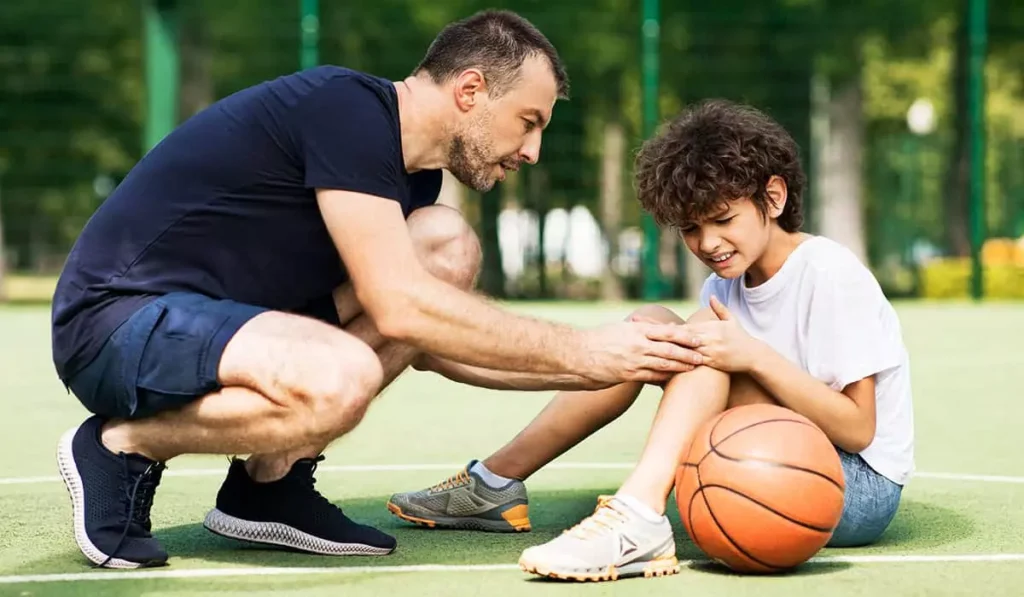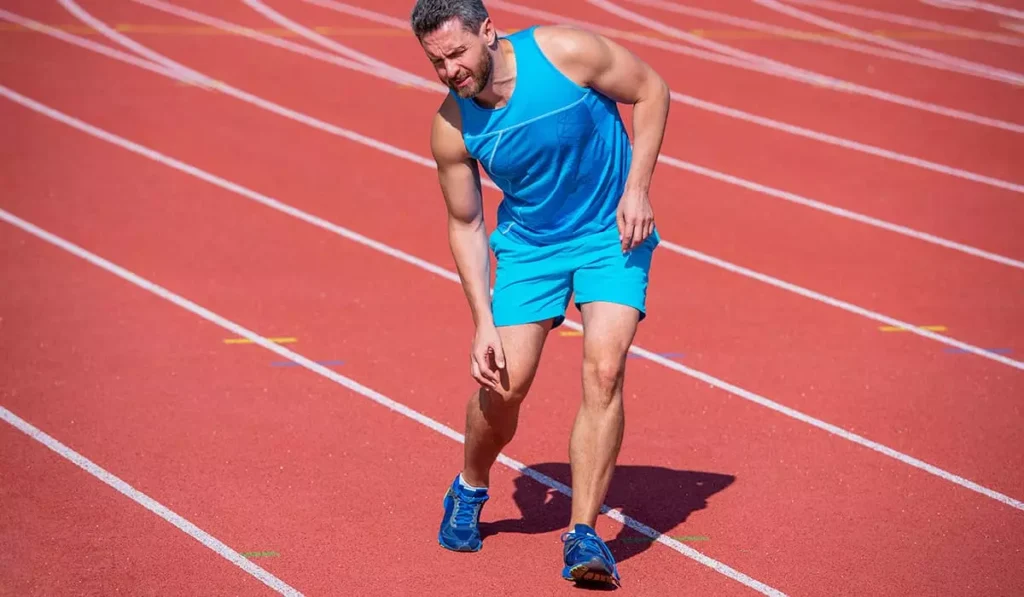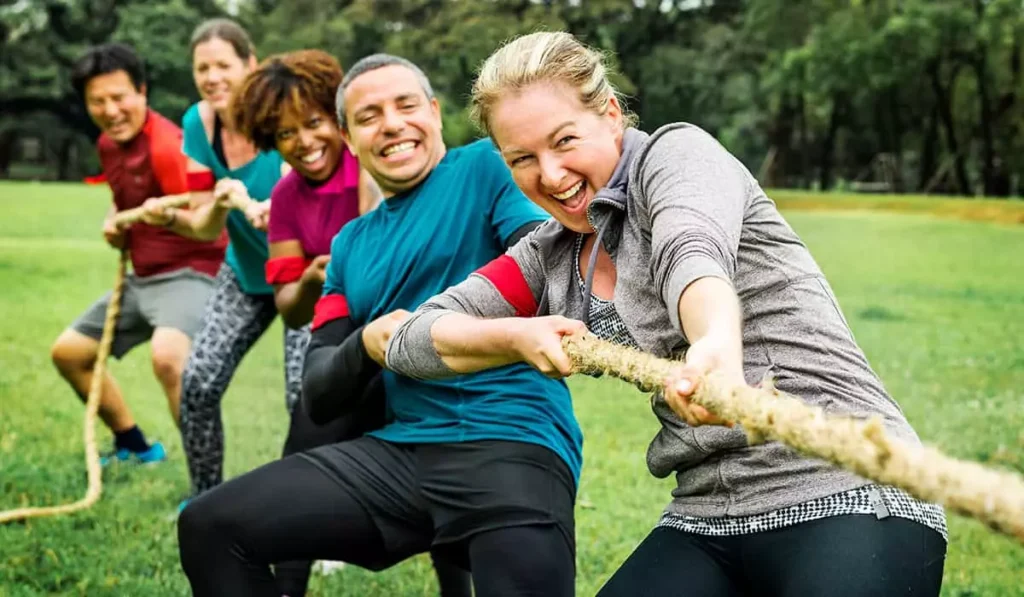
SALTAPS is an acronym commonly used in sports first aid to determine whether a player should rest and be removed from play or if it’s safe for them to continue. While it’s especially useful on the field, this method can be applied to assess minor injuries in a variety of settings.
What does SALTAPS stand for?
As with any acronym, each letter in SALTAPS represents a specific step in the assessment process:
- S – See/Stop
- A – Ask
- L – Look
- T – Touch
- A – Active Movement
- P – Passive Movement
- S – Strength
At Focus First Response, we incorporate SALTAPS and other vital first aid principles into our training courses to ensure you’re prepared to manage minor injuries confidently and effectively.
See/Stop

This step involves observing the injury as it occurs and stopping play immediately.
It serves as the initial assessment, helping you understand how the injury may have impacted the individual. Stopping play allows the first aider from Focus First Response to attend to the injured person promptly and safely.
Ask

If the injured player is conscious, this is the stage where you, as the first aider from Focus First Response, begin asking questions. Start by gaining their consent to provide treatment. After that, ask questions such as:
- What happened?
- Did anyone witness the incident?
- Questions to assess for concussion, like “What’s the date today?”
- Do you remember how the injury occurred?
- How would you rate your pain?
This step helps you evaluate the severity of the injury, observe their posture and facial expressions, and determine if they are speaking clearly and remaining alert.
Look

This is the stage where you, as a Focus First Response first aider, closely examine the injury site for any visible signs of damage, including:
- Bleeding
- Discolouration
- Bruising
- Swelling
- Bone or joint deformity
- Muscle spasms
This visual assessment is essential in helping determine the severity of the injury.
Touch

If the casualty gives permission, this is when you would gently touch the site of the injury as a Focus First Response first aider. The goal is to locate the source of the pain and check for any unusual temperature changes at the site.
Observe the individual’s reactions closely while touching the area, as this helps determine the severity of pain and the extent of the injury.
Active Movement

As part of your Focus First Response training, this step involves checking whether the player can move the injured area on their own and assessing their range of motion. Observe how easily they can move and pay attention to any signs of discomfort or pain during the process.
Ensure they don’t push themselves to move in a way that causes pain or worsens the injury.
Passive Movement

As taught in Focus First Response training, this step involves assessing passive movement—where you move the injured area for the person instead of them doing it themselves.
Ask the individual to relax while you gently move the limb. Throughout the process, check in regularly about any pain or discomfort. If they experience pain during this movement, it may indicate a tendon or ligament injury.
Strength

Finally, assess how the injury holds up against resistance. This can involve asking the person to push against your hand or seeing if they can stand without assistance, to gauge the strength of the injured area.
Gradually increase the weight or load on the injury. For example, with an ankle injury, start by having them stand unassisted. If they manage that, progress to walking, then running or jumping. Only advance to the next step if they can handle it, and stop if the pain intensifies.
Can SALTAPS be used for injuries outside of sports?
Yes, Focus First Response can be applied to assess any minor injuries, not just those from sports. Following these steps allows you to gather accurate information on how the injury happened and how the person is feeling as a result.
If you’re interested in learning more about sports first aid, we offer a one-day training course that covers both minor and more severe injuries.


